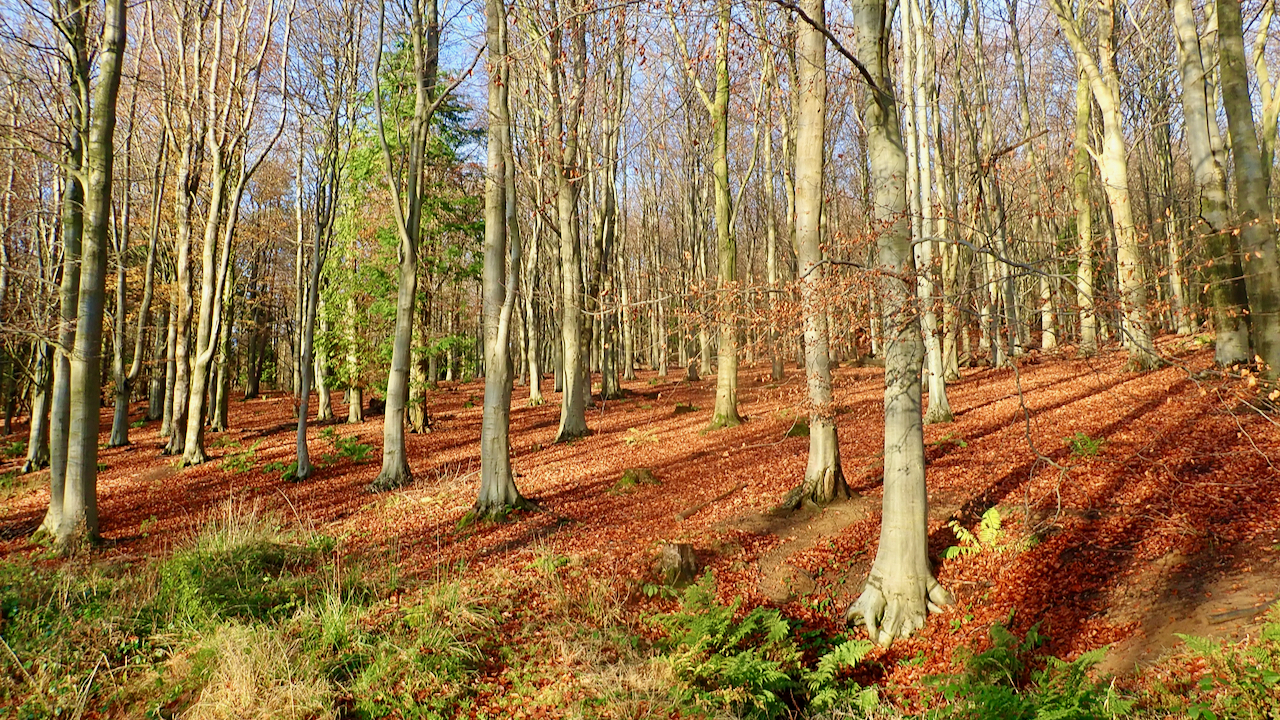There’s something about a beech woodland is that is magical. Strong low sunshine creating long shadows on a winter carpet of leaves.
I know this is not a natural landscape, Sandbeds Plantation above the village of Kildale below Coate Moor. The uniformity of the elegant trunks is a giveaway, probably planted sometime in the late 19th-century. Fine solitary specimens of beech are often called called ‘Queen beeches’, so this must be a forest of princesses although the lack of undergrowth is not exactly a benefit to biodiversity.
Beechwood was traditionally pollarded for fuel, its masts as pannage for pigs with native woodlands are generally found only in the south of the country. The mass planting of beech gained popularity in the 18th-century when the smooth-grained wood became fashionable for furniture.
Not so many years ago, about 2014 if I recall, there was a new edition of the Oxford Junior Dictionary published in which a number of words concerning nature were deleted. Beech was culled along with acorn, adder, ash, bluebell, buttercup, catkin, conker, cowslip, cygnet, dandelion, fern, hazel, heather, heron, ivy, kingfisher, lark, mistletoe, nectar, newt, otter, pasture, and willow. These words were no longer felt to be relevant to a modern-day childhood.
One plant which has managed to gain a foothold on the forest floor is the fern, another word deleted from the Oxford Junior Dictionary. I’m not sure the precise name for these ferns, they are notoriously difficult, probably Lady Fern (Athyrium filix-femina) but that’s a wild guess.

Leave a Reply